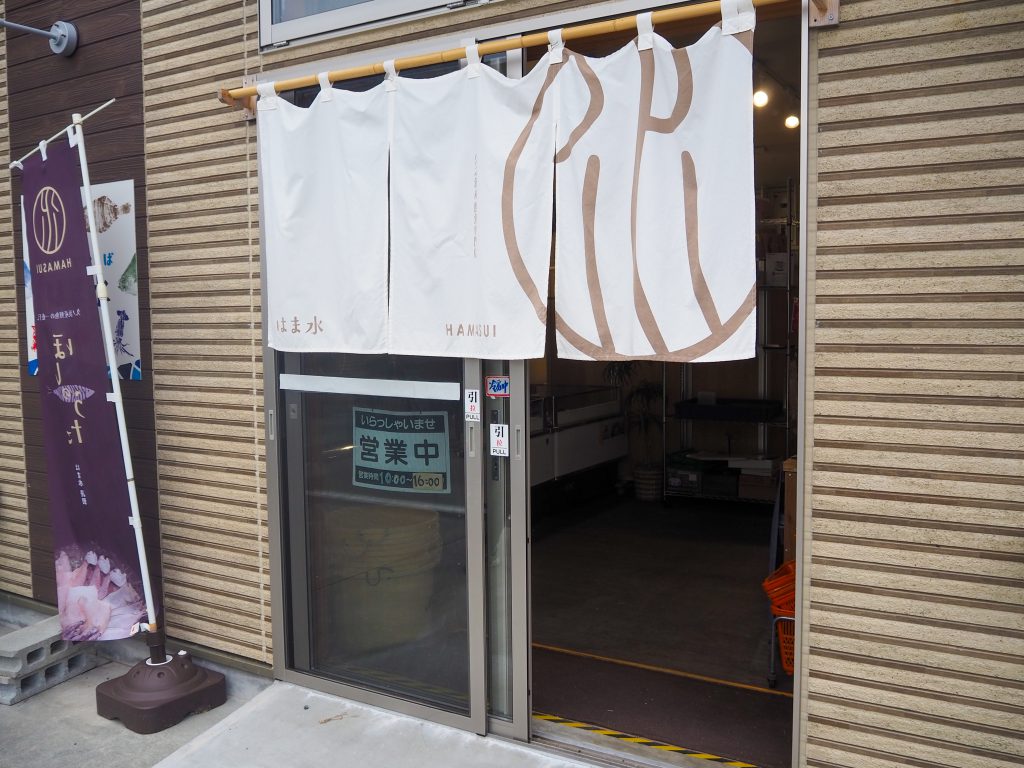Quickly attracting attention! Fat and thick Joban-mono conger eel
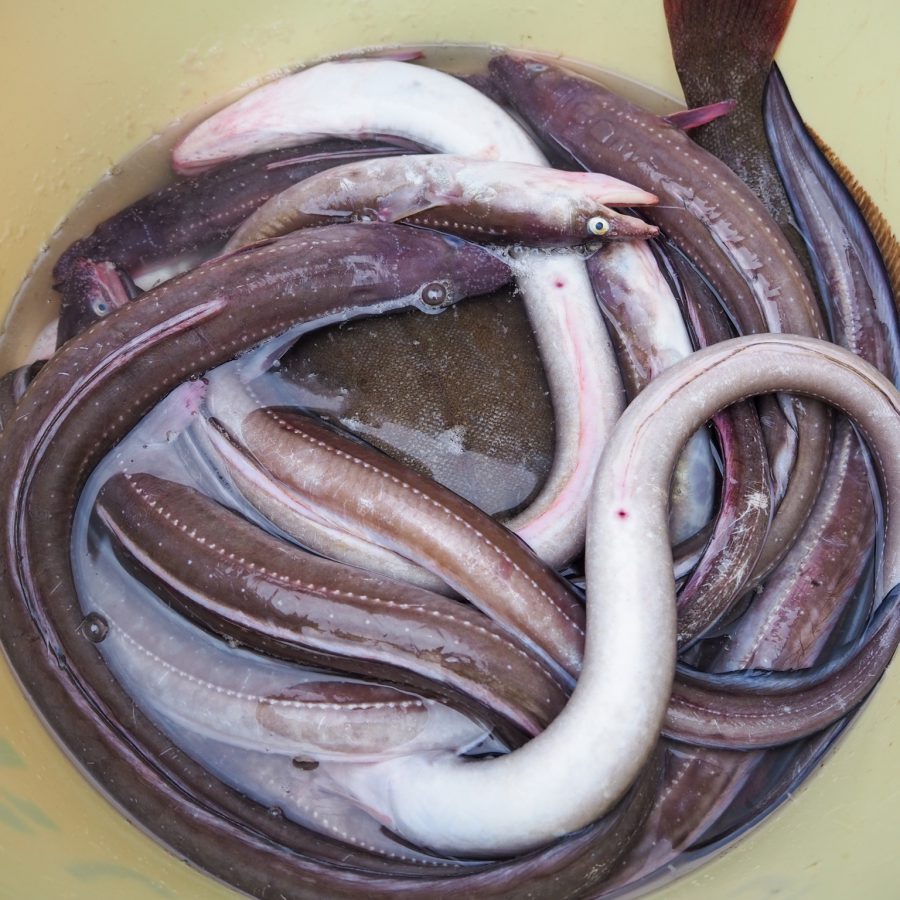
Among Joban-mono seafood, conger eel has been gaining attention in recent years. Conger eel is caught all year-round using bottom trawling and tubular traps, with those caught in winter being particularly fatty and delicious. Although conger eels look very similar to eels, their ecology and flavor are different. For example, eels spend their spawning season in the sea, and after hatching they live in fresh water. On the other hand, conger eels spend their entire life in the sea. Conger eels also have a lighter flavor compared to eels, with the added benefit of being lower in calories and healthier.
Although conger eels have been fished in Fukushima for some time, they have only become more widely recognized in the local area in the last few years. Due to their popularity in urban markets such as Toyosu, many had been shipped out of the prefecture. However, thanks to the efforts of local restaurants and processors, conger eels are beginning to attract local attention. Conger eel is popularized by “Sakanaya Shokudo Urokoju” restaurant, which serves generously portioned conger eel dishes, and “Osakana Hiroba Hamasui”, which sells processed conger eel products. We visited the establishments and asked the owners about the appeal of conger eels.
Conger eel dishes crafted by the fourth-generation owner of a former fish cake manufacturing company

Sakanaya Shokudo Urokoju in Onahama, Iwaki City, is a popular restaurant known for offering fresh fish dishes at reasonable prices. On some days, more than 200 people visit the restaurant in the space of three hours. They have a self-service system for meal vouchers and water, and ask customers to “help themselves so they can enjoy delicious food at affordable prices”. The concept is to reduce labor costs and pass the savings on to the customers. Among many menu items such as sashimi set meals and seafood bowls, conger eel is served as “tempura” and “nimono (simmered dishes)”. According to the owner, Katsuhiro Kanari, Joban-mono conger eel is “surprisingly fatty”. During the closed season for bottom trawl fishing, they used conger eel from other regions, but the lack of fat made them realize once again how delicious Joban-mono conger eel is.

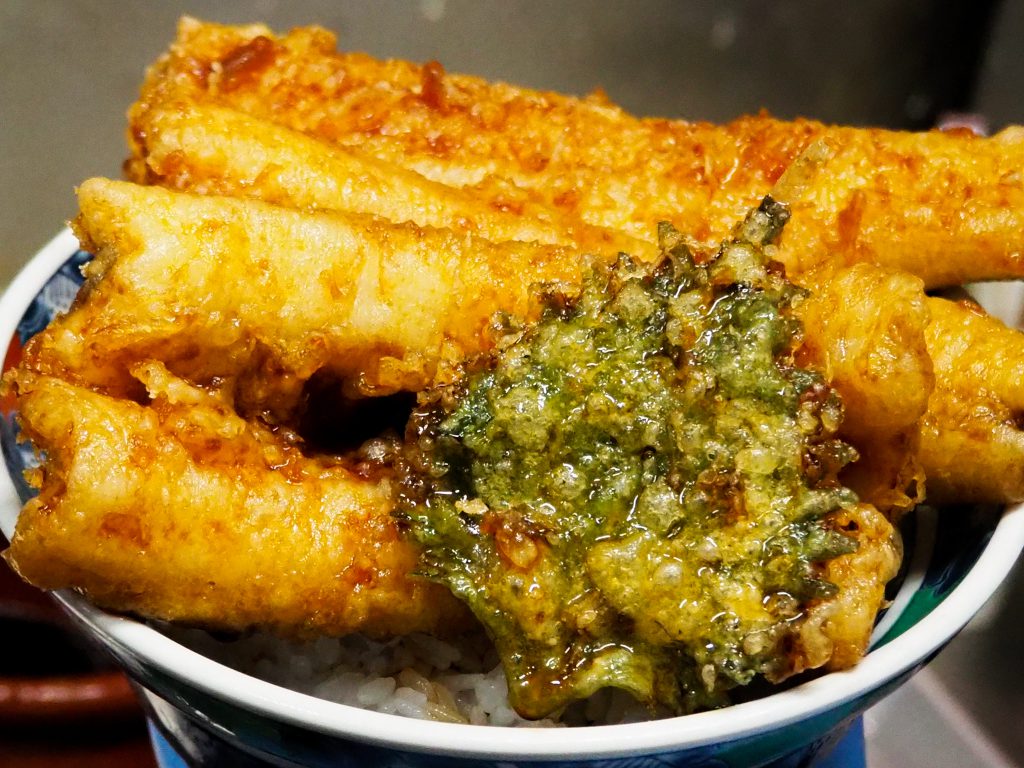
Conger eel tempura bowl at Urokoju is generously topped with conger eel tempura. Mr. Kanari’s hallmark is the boldness of his menu, which features generous portions of ingredients. This reflects his desire to let customers enjoy plenty of the main ingredient, since they order the tempura bowl specifically to eat conger eel.
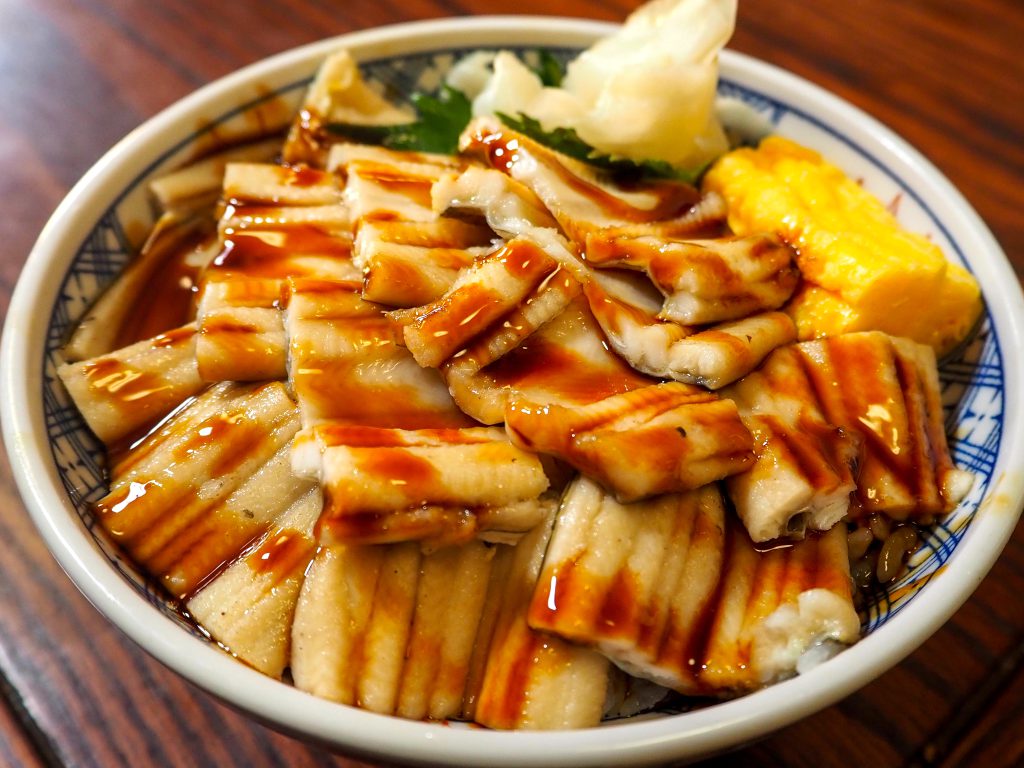
In the Tohoku region, conger eel is mainly prepared as steamed conger eel. Urokoju also offers it as a rice bowl, where you can savor the moist and flavorful simmered conger eel.
Kanari-san, who now stands in the kitchen himself, was originally the fourth-generation owner of a fish cake manufacturing company that had been in business for over 70 years. The factory, located right on the sea, was completely destroyed by the tsunami. Due to financial constraints, he abandoned the plan to rebuild the fish cake factory and instead started Urokoju, a fresh fish and processed goods shop at the tourism and local product center Iwaki Lalamew.
One day, at the shop, a customer said to me, “I’ve come all the way to Iwaki, so I want to eat something delicious”. After the earthquake, he became concerned that the number of restaurants serving fresh local fish had decreased, and he decided to take matters into his own hands. He transformed Urokoju into a restaurant at the new location.
Although it was his first venture into the restaurant business, he found that “when he cooked the fish they had sourced and served it, everyone enjoyed it and said it was delicious”. Gradually gaining confidence, it has now become a popular restaurant with queues of customers. Kanari-san says, “After the earthquake, I realized the importance of getting the word out”. He used to dislike promoting himself, but he realized that “if he did not speak up, no one would notice”. Fukushima is home to a number of delicious fish that are surprisingly not well-known, including conger eel. Instead of just waiting to be noticed, he now actively shares his thoughts and promotes these local treasures. Behind this approach is a deep confidence in the fish and dishes he serves.
●Sakanaya Shokudo Urokoju
Address:54-3 Hayashizaki, Shimokajiro, Onahama, Iwaki City, Fukushima Prefecture
Opening hours:11 AM to 2 PM (Last order)
Closed:Wednesdays
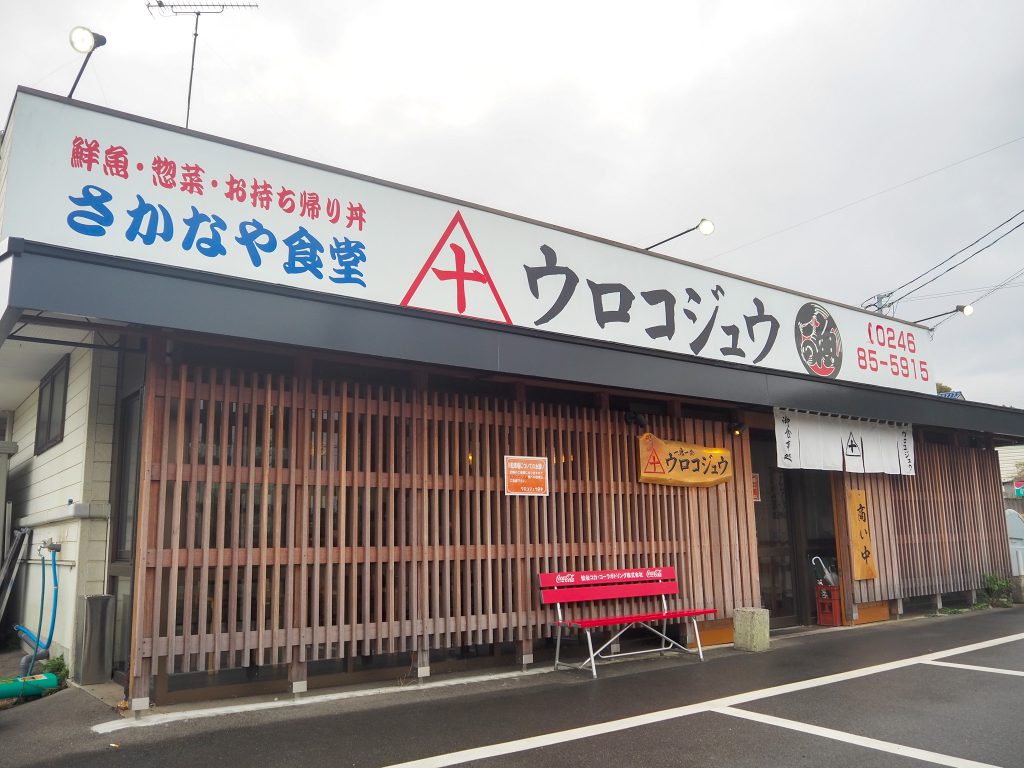
Glaze-grilled conger eel, also available by mail order
Osakana Hiroba Hamasui is a fish shop in the Hisanohama district of Iwaki City. Located within the community shopping center “Hamakaze Kirara”, it specializes in fresh fish, dried fish, and other Joban-mono seafood. Some products are also sold online, with “hand-grilled whitespotted conger eel” being particularly popular. According to the representative, Takahisa Abe, these products are so popular that they sell out as soon as they are put on display.
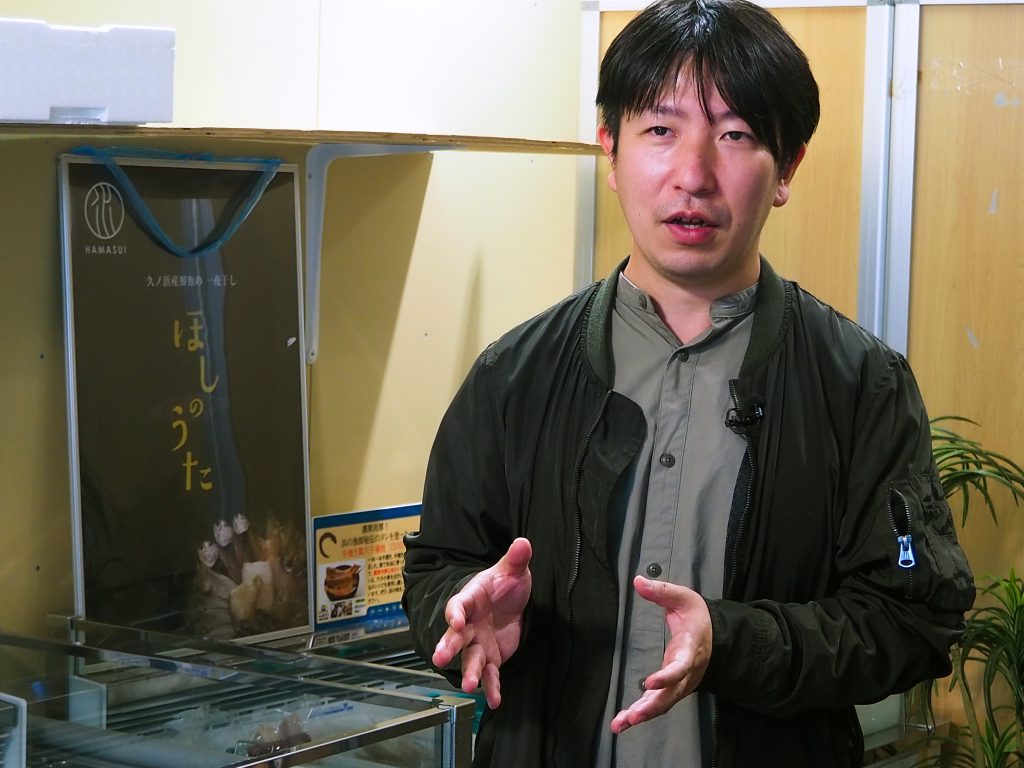

Hand-grilled whitespotted conger eel is a popular product made with large Joban-mono conger eels. This is a masterpiece that combines the secret sauce that has been made and passed on by local women (the “mothers of the beach”) with the light fat of conger eel, and there are many repeat customers. The burnt taste and smell of the hand-baked fish is also sealed in the vacuum pack so you can enjoy the “taste of the beach” at home.
The development was prompted by the thought “Can we create products with large conger eels?” as smaller conger eels were highly prized as sushi ingredients. Initially, they tried making simmered conger eels, but the thick flesh was not well-suited for it. Abe-san said, “When we tried grilling it, it turned out to be much tastier”.
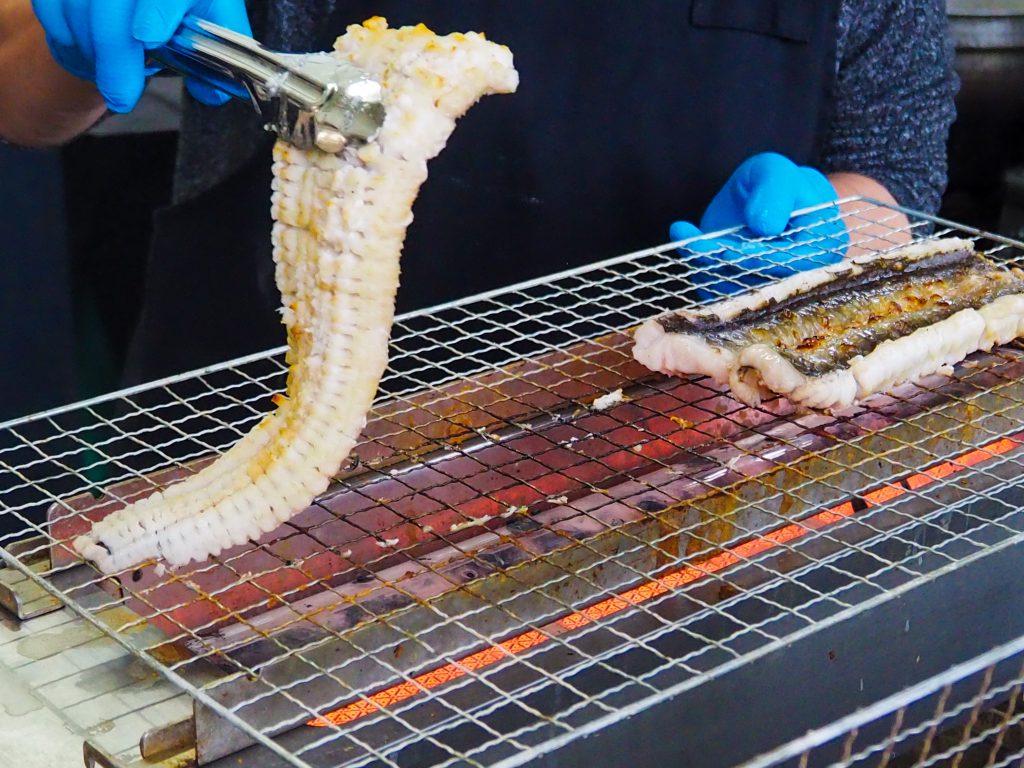
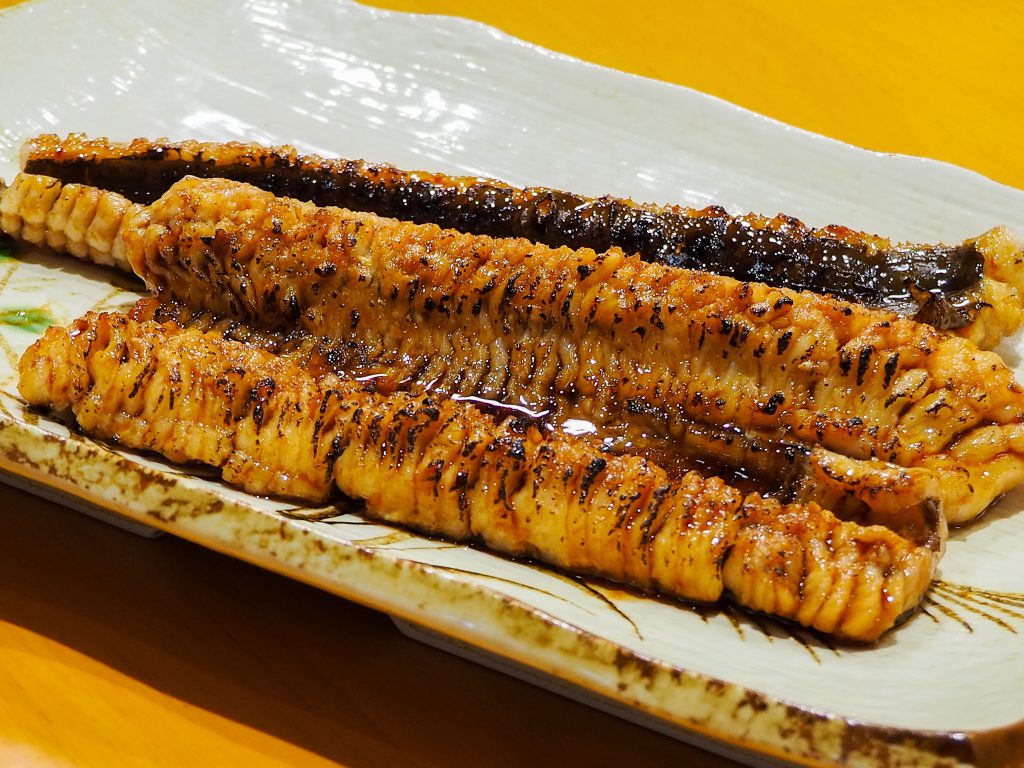
The development of “Hand-grilled whitespotted conger eel” was driven by a decrease in sales due to the COVID-19 pandemic. They recognized the need to create something that could be delivered online, not just sold in-store, and began developing new products. While thinking about “what products can be made from Joban-mono fish?”, we came up with the idea of conger eel. The conger eel stood out because it had not received much attention among the 200 or so Joban-mono species, despite its considerable catch volume.
Originally, Abe-san worked in a field unrelated to fish or the sea. Although his father was a marine engineer and his grandfather a ferry captain, giving him a connection to the sea, he never imagined himself working with fish. When I was in my previous job helping people to start their own businesses, I thought to myself, “It’s presumptuous of me to be advising other people when I haven’t even started my own business yet”. As a new starting point, he chose to venture into the fish industry. Although he had never handled fish before, through daily effort he has now mastered techniques such as shinkei-jime (a fish preparation technique involving quick killing and nerve destruction) for flounders and hanging butchery for monkfish.
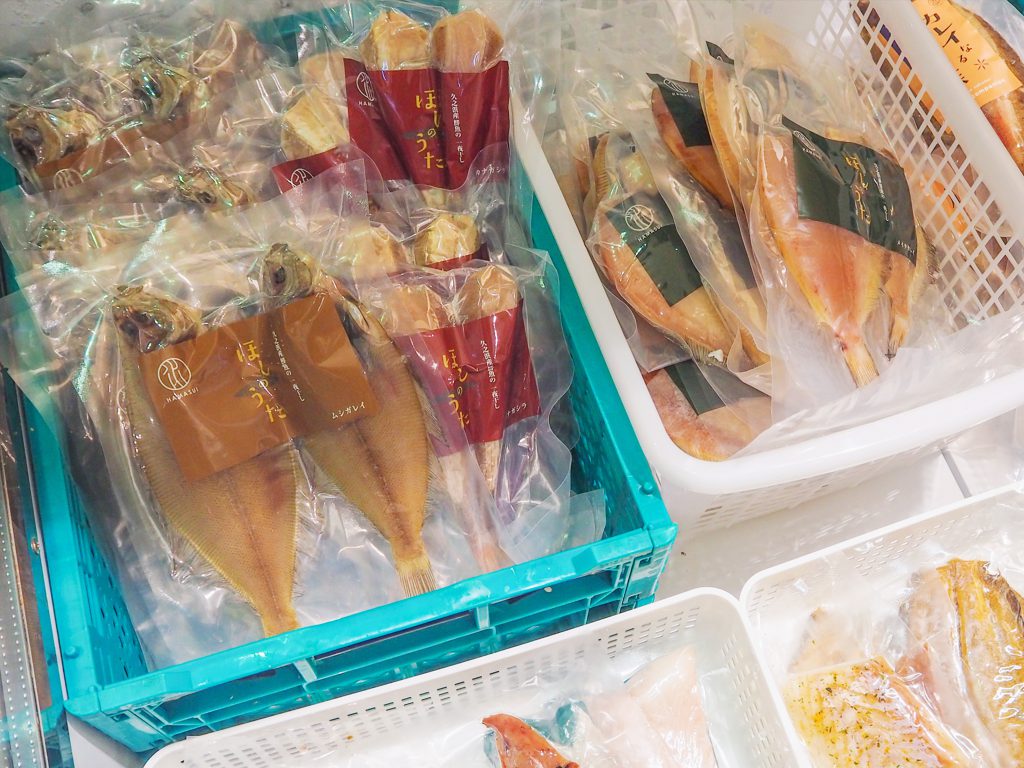
At Hamasui, they also sell products such as the “Hoshi no Uta” range of fresh, overnight-dried Joban-mono fish and items made from monkfish. Abe-san’s activities go beyond developing new products at Hamasui and promoting the appeal of Joban-mono seafood. To help reverse the decline of the local fishing industry, he is also actively involved in training new fishermen, aquaculture business, and the conservation of marine resources. To preserve Fukushima’s fishing industry for future generations, Abe-san is continuing his efforts in cooperation with local governments and businesses.
●Osakana Hiroba Hamasui
Address:134 Hamakitamachi, Hisanohamamachi, Iwaki City, Fukushima Prefecture (inside Hamakaze Kirara)
Opening hours:10 AM to 4 PM
Closed:Tuesdays
